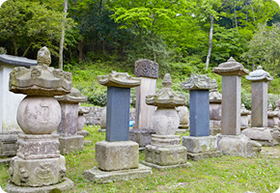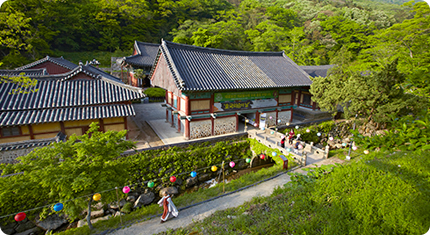Buddhist Mountain Monasteries in Korea
Daeheungsa Temple
Daeheungsa Temple
Introduction
Natural Environment
History
Temple Layout
Cultural Properties
Information
About Daeheungsa Temple
-
-
 View of Daeheungsa Temple
View of Daeheungsa Temple
-
Daeheungsa Temple is the main temple of the 22nd diocese of the Jogye Order of Korean Buddhism situated against the backdrop of the exquisite scenery of Duryungsan Mountain found in Haenam-gun, Jeollanam-do Province, which is the southernmost tip of the Korean peninsula.
Because the mountain has also been called Daedunsan, the temple name was changed between Daedunsa and Daeheungsa before it was changed to Daeheungsa in 2003. Also, because the mountain was formerly called, Handeum, meaning “large” and “round/mass,” the temple was also called Handeumjeol Temple for a long time. Over the years, the name Handeum was changed to Daedeum, with the use of the Sino-Korean character for “large,” before it was changed again to Daedun. Accordingly, the name of the temple also underwent changes to Daedeumjeol and Daedunsa.
-
- Then, the mountain was given the name, Duryunsan, taking the second letters of Baekdusan and Gon-ryun, because it is the terminal end of the mountain ridge extending from Kunlun Mountain (pronounced “Gon-ryun” in Korean) of China that also forms Baekdusan Mountain.
-
 Cheonbuljeon Hall of Daeheungsa Temple
Cheonbuljeon Hall of Daeheungsa Temple
 Rock-carved Seated Buddha at Bungmireugam Hermitage of Daeheungsa Temple, Haenam
Rock-carved Seated Buddha at Bungmireugam Hermitage of Daeheungsa Temple, Haenam
 Stupas of Daeheungsa Temple
Stupas of Daeheungsa Temple
-
- Great Monk Seosan had his robe and alms bowl retained here as he considered it a “land that will not be influenced by the three calamities including war and will remain intact for 10,000 years.”
Later, Daeheungsa played an important role in the history of Korean Buddhism, transforming into a national defense bodhimandala and producing 13 great patriarchs (Daejongsa) and 13 great senior instructors (Daegangsa).
Daeheungsa, which has produced countless Seon monks and teaching monks in the late Joseon Dynasty and advanced as the central bodhimandala of Korean Buddhism, has also retained its prestige as a representative national defense temple. Pyochungsa, situated on the temple site, is an emblem of the national defense bodhimandala created by the State to honor the national salvation efforts of Great Monk Seosan. Furthermore, thanks to Seon Master Choiui, one of the 13 Daejongsas, Daeheungsa Temple became the center of Korean tea culture. -
 Northern section of Daeheungsa Temple
Northern section of Daeheungsa Temple
- Great Monk Seosan had his robe and alms bowl retained here as he considered it a “land that will not be influenced by the three calamities including war and will remain intact for 10,000 years.”
Later, Daeheungsa played an important role in the history of Korean Buddhism, transforming into a national defense bodhimandala and producing 13 great patriarchs (Daejongsa) and 13 great senior instructors (Daegangsa).
